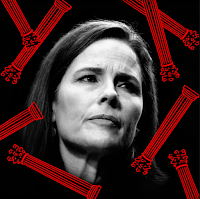Today is Halloween, which here in the U.S. has become a horrendous commercial spectacle. This despite the fact that the day has roots in the Catholic celebrations of November 1, “All Hollows Day” (or “All Saints Day”) and November 2, “All Souls Day.”
Deeper still. . . . Elements of Halloween developed from a pagan holy day, the ancient Celtic feast of Samhain (pronounced sow-in), which was the eve of the new year. It was a time when it was believed the veil between this world and the next was at its thinnest, and people and spirits could “cross over,” could pass back and forth between the two worlds. Huge bonfires were lit on hilltops – some say to frighten away evil spirits; others, to warm the souls of the departed. Perhaps both.
Of Samhain, Colette O’Neill writes:
The ancient festival of Samhain marked the last day of the Celtic year, with the rising of the sun on the following morning illuminating the New Year and the turning of the wheel. Samhain was a crucial time of year, loaded with symbolic significance for the pre-Christian Irish. As they watched the sun descend into the western skies, the symbolic inference was that of a descent into the Otherworld. This marked the thinning of the veil, as those within the Otherworld were free to roam the Earth. The Sidhe, (faeries as we know them, for we know so little of them) have the power of shapeshifting and were deemed able to walk among us, unknown and unrecognisable to mortals. Alongside them travel our ancestors and other spirits we fail to recognise. It is a night filled with magic!
As perhaps you’ve discerned, I resonate more with the pagan Celtic understandings of this time of year than I do the Roman Catholic ones. And that's okay. Actually, what I find most meaningful is to gather of all the names, origins, meanings, and dates associated with this time of year and speak simply of Hallowtide, and to emphasize the transformative power, the witch power, that the time calls to mind and heart.
And so to mark Hallowtide this year at The Wild Reed, I share an excerpt from Dianne Sylvan’s book, The Circle Within, along with some of my photography that I hope captures some of the beauty and mystery of this special time of year. (You might recogize in these photos the Prayer Tree. There’s also a beautiful candlelit portrait of my friend Mahad, who, as I acknowledge here, currently hovers between this life and the next.)
Samhain is here . . . and darkness falls.
Traditionally, Samhain is a time of divination, of communicating with absent friends or the deepest parts of ourselves, the still silent waters in our spirits. . . . The water of Samhain is motionless, reflective, and we can look into its mirrored surface and see all the mysteries that lay beyond life. At Samhain, the past year finally slips away, and with one last breath we close our eyes . . . only to open them again at another time, another place, another life.
Water is usually associated with the west, the land of sunset, and Samhain is the moment when the sun’s last rays disappear behind the horizon and twilight drops its misty veil. We can look behind the veil and see things that were hidden by the light of day.
– Dianne Sylvan
Excerpted from The Circle Within”
Llewellyn Publications (2003)
p. 120
Excerpted from The Circle Within”
Llewellyn Publications (2003)
p. 120
See also the previous Wild Reed posts:
• Samhain: A Time of Magick and Mystery
• At Hallowtide, Pagan Thoughts on Restoring Our World and Our Souls
• Resilience and Hope
• An All Hallows Eve Reflection
• Halloween Thoughts
• A Hallowtide Reflection
• The Pagan Roots of All Saints Day
• “Call Upon Those You Love”
• Our Sacred Journey Continues: An All Saints and Souls Day Reflection
• An All Souls Day Reflection
• Autumn: Season of Transformation and Surrender
• “A Dark Timelessness and Stillness Surrounds Her Wild Abandonment”
• Gabriel Fauré’s “ChristoPagan” Requiem
• Advent: A “ChristoPagan” Perspective
• Magician Among the Spirits
• The Prayer Tree
• Holy Encounters Where Two Worlds Meet
• The Landscape Is a Mirror
































































